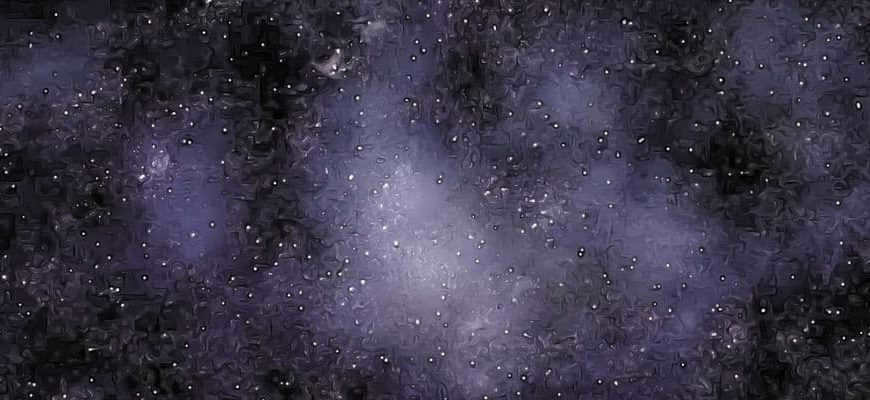
The power of a star is generated through the process of thermonuclear fusion taking place in an immense and everlasting cosmic furnace suspended in the vastness of space. Stars give the impression of being eternal, existing for all time, but in reality, this is far from the truth….
A celestial body known as a star is composed of hydrogen and helium, and within it, the process of thermonuclear fusion takes place, as previously mentioned. However, this fusion consumes hydrogen as fuel, leading to its eventual depletion and the cessation of fusion. During its final stage, the star may also produce other elements such as helium, oxygen, or carbon under specific conditions. Nevertheless, this process ultimately comes to an end. Consequently, the star no longer retains its status as a star, transforming into an entity incapable of sustaining fusion. Depending on its original mass, it may evolve into a white dwarf, a neutron star, or a black hole.
Stars have a limited lifespan
Therefore, the existence of a star is not eternal. However, stars do not simply cease to exist. They are constantly being created! Presently, new stars are continuously forming from the vast gas clouds in the space between stars. Yet, this process cannot continue indefinitely! In our Milky Way, for instance, an average of three to five new stars are born each year. However, in the past, billions of years ago, the situation was different. During that time, a significantly larger number of stars were created. Why did this happen? Well, young galaxies not only possess more gas available for star formation, but they are also much more dynamic. Some sort of impulse is required to cause the gas within the clouds to contract and transform into a star.
However many or few stars were formed in the past or will be formed in the future, it is irrelevant. What matters is that they have been and continue to be born! And this process will persist.
Nevertheless, there will come a time when this magnificence will cease. This is because the gas within the observable part of the Universe has a finite volume. The exact amount of gas is difficult to determine. When a star reaches the end of its life and explodes, such as in the form of a supernova, it always returns some matter back into space. However, it is possible to roughly estimate the point at which stars will deplete all matter in space.
A detailed description of the long-term fate and evolution of astrophysical objects in the universe was provided by astronomers Fred Adams and Gregory Laughlin in their paper titled “The Dying Universe”. Although this work was published a while ago, it remains highly relevant today.
The Five Epochs of the Universe’s Life
Scientists have categorized the past and future history of the cosmos into five distinct phases.
Immediately after the occurrence of the Big Bang, no stars were present in the universe. It took approximately a million years for the first stars to form, marking the beginning of the Primordial Era. This era was followed by the Stellar Era, which is the current phase we are in. Our night sky is adorned with countless stars and galaxies, creating a beautiful sight that we greatly appreciate.
The duration of stars’ existence varies depending on their mass. Our Sun has an overall projected lifespan of approximately 10 billion years. More massive stars have shorter lifespans, while less massive stars can live considerably longer. The lifespan of diminutive red dwarfs, such as our nearest neighbor Proxima Centauri, theoretically could extend to trillions of years. Nonetheless, approximately 100 trillion years after the occurrence of the Big Bang, the stellar era will conclude. By that time, the Sun and Earth will have long ceased to exist. In that remote future, the final red dwarfs will have exhausted their fuel, and there will be no remaining gas in space to generate new stars.
The great thing is that there exist celestial bodies in the vastness of the cosmos!
Following the stellar era, we can anticipate the coming Age of Extinction (Degeneration), wherein the remaining entities – white dwarfs, planets, brown dwarfs, and others – will gradually eradicate one another or plunge into the depths of black holes. This phase is projected to endure for approximately 10 40 years. If we extend our gaze even further into the distant future, we can discern the era of black holes looming ahead, poised to exert their dominance over the Universe. This epoch is anticipated to persist for 10,100 years. And eventually, at an exceedingly remote point in time, a Dark Age will ensue. Even the black holes will dissipate, leaving behind only the atoms of matter gradually transforming into radiation. Such a scenario is projected to transpire in a future so remote that the magnitude of these figures may appear unfathomable: 10,100 to 10,000 years!
No one can fathom the minuscule trillion years that stars will illuminate the universe! And behold, such a figure exists. Thus, these proportions scarcely matter. They will remain unrealized in any case.
Therefore, the response to the inquiry posed in the title of this article is as follows: stars will radiate for at minimum another 100 trillion years. However, subsequently, it will all culminate. Hence, we may consider ourselves fortunate to inhabit the stellar era of the cosmos. Although, to be frank, it could not have been otherwise. Devoid of stars, life as we comprehend it would not be feasible. We can only subsist in a universe teeming with stars.
Prior to examining the progression of each star type throughout its existence, it is crucial to note one significant aspect. There exists a direct correlation between a star’s mass and its lifespan.
The life cycle of a star
Everything in our universe continues to undergo changes. Every entity, including stars, follows a pattern of birth, growth, and eventual demise. However, the life cycle of a star differs from that of other living beings. Firstly, the duration of a star’s life cycle is much longer, spanning millions or even billions of years. Moreover, the death of a star has profound implications. So, how exactly does the life cycle of a star unfold?
Let’s begin by considering the birth of a star. Imagine a massive cloud of cold molecular gas that can peacefully and unchangedly exist in the Universe. However, suddenly a supernova detonates nearby or collides with another cloud. This sudden impact triggers the process of nuclear fission. It divides into smaller fragments, each of which reassembles itself. As you can observe, all of these fragments are preparing to evolve into stars. Gravity causes them to heat up, and the accumulated momentum keeps them in motion. The diagram presented below clearly illustrates the cycle of stars, including their lifespan, stages of development, potential transformations, and eventual death as celestial bodies (with accompanying photos).
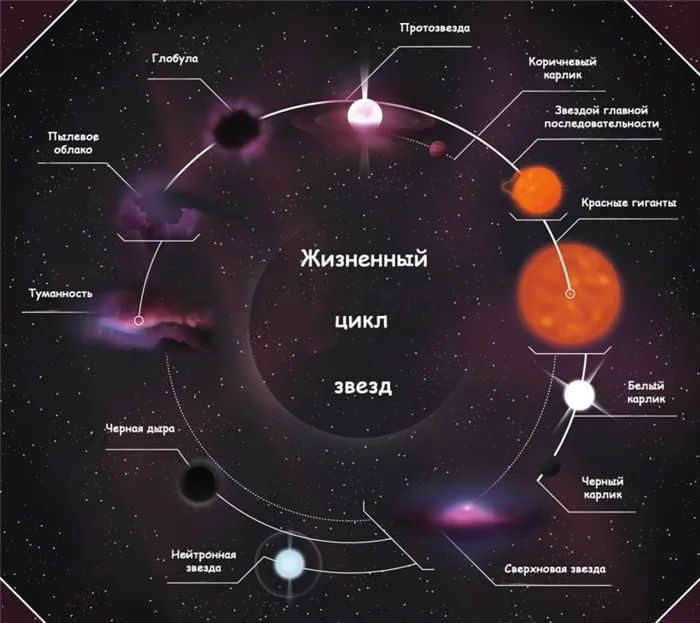
Protostar
As the material continues to compress, it becomes hotter and is expelled due to gravitational collapse. This expulsion leads to the formation of a protostar, which is surrounded by a disk of material. Some of this material will be drawn towards the protostar, increasing its mass. The remaining debris will accumulate and eventually form a planetary system. The subsequent evolution of the star is determined by its mass.
When the material collides with the star, it releases a tremendous amount of energy. This new stage of the star is named after the constellation Taurus. The Taurus star is a variable star located approximately 600 light-years away, near the Hyades cluster.
Due to the decay and release of energy, the material of a celestial body can achieve high luminosity. However, in the central region, the temperature is insufficient for nuclear fusion. This phase continues for a duration of 100 million years.
Main sequence
When the temperature of a celestial body reaches the appropriate level, nuclear fusion is triggered. This is a common stage in the life cycle of all stars. Hydrogen undergoes fusion to form helium, resulting in the release of a tremendous amount of heat and energy.
The energy is emitted in the form of gamma rays, but as the star moves slowly, its wavelength decreases. This causes the light to be pushed outward and counteracted by gravity, creating a state of perfect equilibrium.
What is the duration of the main sequence? The duration of the main sequence is dependent on the star’s mass. Red dwarfs, which have half the mass of the Sun, can remain in the main sequence for hundreds of billions or even trillions of years. On the other hand, normal stars like the Sun have a lifespan of 10-15 billion years. However, the largest stars can live for billions or even millions of years. The diagram illustrates the evolution and eventual demise of stars across various categories.
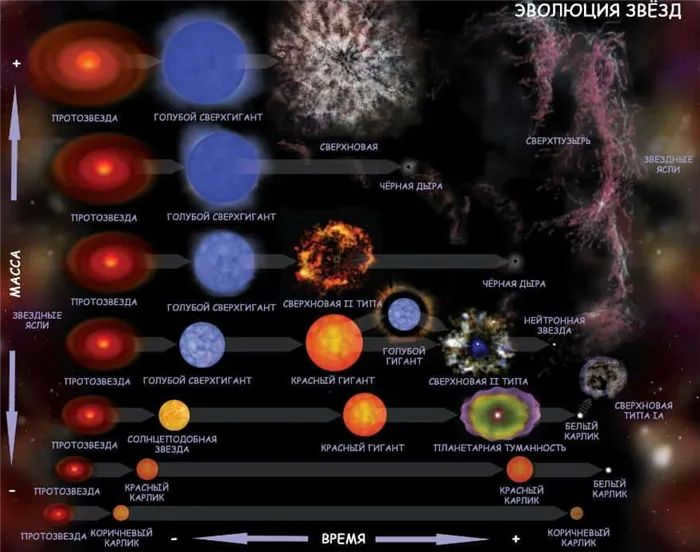
A celestial object known as the Sun
According to scientific research, the Sun is a typical star that has been illuminating the planet Earth for approximately five billion years and will continue to do so. The duration of sunlight is influenced by the amount of fuel present in this celestial entity.
Essentially, almost all stars undergo thermonuclear reactions that result in their luminosity. The fusion process occurs within the hot cores of stars, where temperatures can reach up to 20 million °C (20000273.15 Kelvin).
When it comes to correlating the temperature and discerning the levels of reaction happening in the nucleus, the primary indicator is often the color of the star’s surface. The coolest stars exhibit a red hue, indicating core temperatures that can reach up to 3500 K. If observed through binoculars, yellow stars can be seen with core temperatures reaching as high as 5,500 K, while blue stars have core temperatures ranging from 10,000 to 50,000 K.
The Rate of Energy Release and Lifespan of Stars
The life cycle of stars initiates with the formation of a cloud consisting of dust and gas. During this process, hydrogen ignites and transforms into helium. Once all the hydrogen is consumed, other astronomical processes commence, such as the burning of helium, leading to the creation of heavier elements.
The temperature of combustion within a star, along with the gravitational pressure exerted by its outer layers, influences the rate at which energy is produced by the celestial body. This rate is directly linked to the total lifespan of the star. As the mass of the star increases, the combustion temperature and external pressure parameters also increase. Consequently, the rate of energy production rises, resulting in the observed luminosity of stars.
Stars with a significant mass cubed consume their nuclear fuel at a much faster rate, within a span of a few million years, and are the most brilliant celestial entities. On the other hand, low-mass stars utilize hydrogen more efficiently and conserve fuel, allowing them to have a lifespan that extends beyond the age of the Universe. Despite their diminished luminosity and energy efficiency, low-mass stars can persist for up to 15 billion years.
The lifespan of stars and their different generations
The overall duration of stars’ existence is influenced by more than just their size; it also depends on their original composition during their formation. In the early stages of the Universe, the initial celestial bodies lasted only a few tens of millions of years due to their immense size and composition primarily consisting of hydrogen.
Within the cores of these massive, hydrogen-rich bodies, thermonuclear reactions occurred at an accelerated rate, converting hydrogen into heavier elements like helium. Eventually, the core would cool down because the temperature and pressure were insufficient to continue processing the heavier elements, leading to the star’s explosive demise. The remnants left behind by these exploding celestial bodies then give rise to new stars that are less hot and more luminous.
A star similar to our Sun is already considered a third-generation yellow dwarf of spectral class G. During its formation, these stars contain not only hydrogen but also lithium and helium. It would take billions of years for the hydrogen fuel in such a star to be fully depleted, as typical stars are in the middle of their lifespan.
- How long do stars live?
- How long can stars survive?
- Can we count all the stars in the sky?
- What causes stars to have different colors?
- How long will the Universe exist?
- Milky Way: the story of its discovery and characteristics
- What causes the increase in daylight hours?
- What are stars made of?
- What does a star look like in space?
- Why do stars twinkle?
- What is a brown dwarf?
- What causes stars to emit light?
- Which mammal has the longest lifespan
- 10 celebrities who never existed
- Dmitry Golubev: life story, achievements, career, personal life
- What is the population of elephants
- How many seasons of the Star Factory are there
- Who holds the record for the longest lifespan
- What currency should I use to travel from Russia to Belarus
- Photos of Ekaterina Andreeva’s husband
- Photos of Nikita Malinin’s children
- Clayson George Samuel: life story, career, personal life
- Angela Bramanti: life story, achievements, career, personal life
The term “hype” is frequently used in contemporary youth slang. Sometimes it goes unnoticed.
Stars’ Demise: Understanding the Final Moments
The reality is that the demise of a stellar entity can occur due to various factors. One such instance is observed in red dwarfs, which gradually cool down and transform into frigid, obscure entities once their hydrogen fuel has been entirely consumed.
Meanwhile, a dying star, similar to our very own Sun, undergoes a process of burning through its helium reserves, causing its luminosity and internal temperature to escalate. Consequently, these luminous celestial bodies shed their outer gas shells, ultimately transforming into colossal giants that eventually shed their shells as well. This sequence of events culminates in the formation of a compact, scorching white dwarf, which eventually cools down and evolves into a chilling, obscure entity amidst the vast expanse of space.
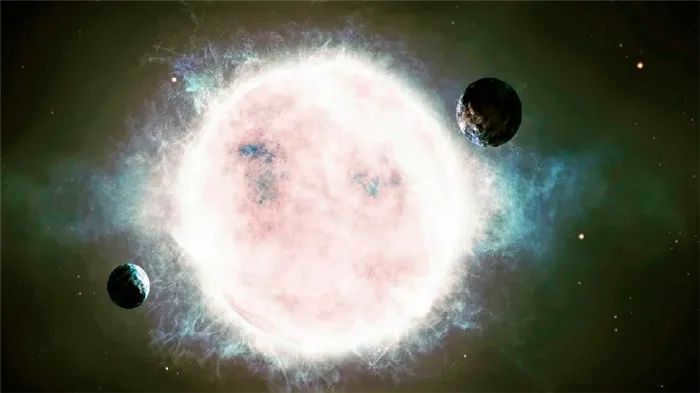
When a star’s mass exceeds seven times that of the Sun, the burning of carbon and oxygen commences within it, following the burning of hydrogen and helium. Eventually, these elements explode, resulting in a supernova. This triggers a powerful thermonuclear explosion, causing the brightness of the star to increase by a million times and heavy elements to form.
Thus, the formation of new stars is made possible by these elements and the energy they release into space. Additionally, the remnants of the star’s core can give rise to a neutron star or even a black hole.
If stars perish, it is due to necessity
The fate of a star, whether it thrives or withers away, is determined by its constituent elements and overall mass. When an atomic nucleus contracts, it generates heat. As long as the fusion of hydrogen into helium persists, the star remains in its initial or main evolutionary phase. Once the hydrogen is depleted, helium transforms into carbon. However, even the supply of carbon is not infinite. When a celestial body possesses sufficient mass, the burning of carbon and heavier elements commences after the helium stage.
Naturally, a dying star always leaves behind a signature. The nature of this signature is contingent upon the star’s original properties.
It can be said that the nuclei govern everything, as their composition and the processes occurring within them directly impact the other characteristics of the star. Collectively, these factors dictate the life and demise of a star in the celestial realm.
Stars, like everything else in the vast expanse of the universe, meet their demise in a myriad of ways. The unique and diverse nature of each star’s characteristics and properties determines the course of its life and ultimate fate.
Occasionally, deceased stars play a pivotal role in the creation of new life or contribute to the formation of celestial bodies, serving as catalysts for cosmic evolution.
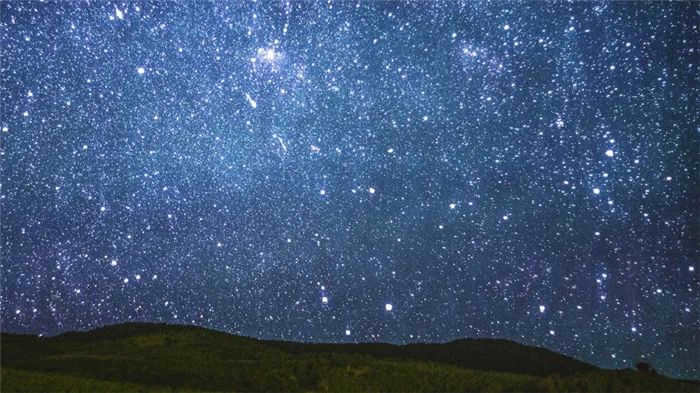
Undoubtedly, the vibrant display of a star’s demise in the cosmos is a mesmerizing spectacle. However, it is an incredibly rare occurrence to witness.
Truly, the vast expanse of the celestial sphere, with its enigmatic wonders, is an enigmatic and captivating realm. Everything operates in accordance with a set of rules, even if the origins, existence, and eventual demise of celestial bodies are not always fully comprehensible. These contrasting aspects are intrinsically intertwined with the essence of life itself.
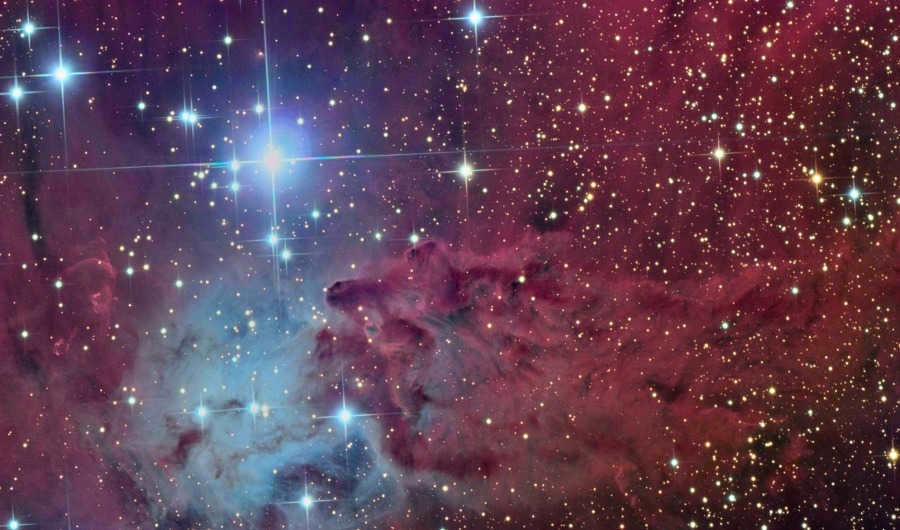
Nothing is eternal in the cosmos. Even the stars themselves have a finite lifespan. When we gaze up at the nocturnal sky, the stars appear timeless and unchanging. From a human perspective, they seem to endure indefinitely, but the universe is in a constant state of flux.
If we were able to live for billions of years, we would witness the transformation of the night sky as new stars are born and others perish. The existence and demise of stars is an unending cycle that unfolds throughout the cosmos.
The demise of one star paves the way for the birth of another. The matter that once constituted the star will be recycled and utilized in the creation of a new generation of stars and planets. How do stars come into being and how do they meet their end?
The creation of a celestial body
Every celestial body is formed from a vast accumulation of hydrogen gas found in a specific area in space known as a nebula or interstellar gas cloud (hydrogen). These clouds gradually condense as a result of gravitational instability. Initially, only massive clouds are capable of contracting, but as they do so, they break up into smaller regions of compression, each of which eventually evolves into an individual star.
The process of accretion becomes exponential as more mass leads to greater gravitational force, which in turn leads to more mass. Once enough hydrogen is combined, the temperature and pressure reach a critical threshold, triggering the start of nuclear fusion.
At the heart of every star, hydrogen nuclei combine to create helium through nuclear fusion, which leads to the release of vast amounts of energy. When this fusion process is maintained within the developing star, it transforms into what is referred to as a main-sequence star. Each main sequence star exists in a state of balance.
The star’s immense gravitational force attempts to compress it, but the outward release of energy from nuclear fusion counteracts gravity. These two opposing forces support the star for millions and billions of years.
The primary sequence
While the birth process of every star follows a similar pattern, the type of star that ultimately forms is determined by its mass. Additionally, the mass of a star influences other important attributes, like its gravity and luminosity. Astronomers rely on the main sequence to classify stars according to their characteristics.
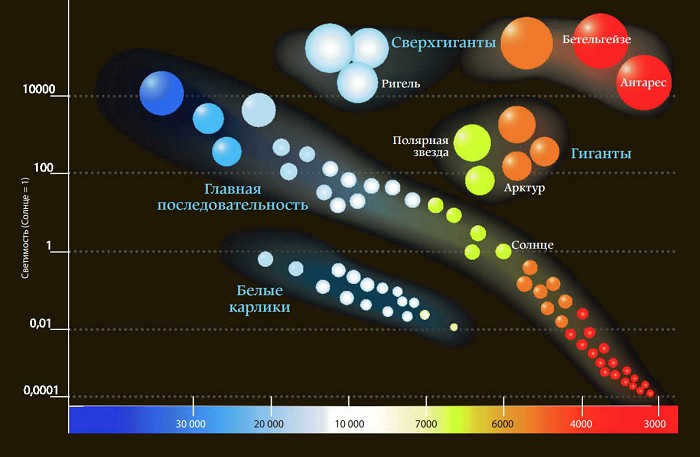
The Hertzsprung-Russell diagram, commonly known as the main sequence, is a graphical representation of a star’s luminosity and mass. By observing where a star falls on the main sequence, its stellar type can be determined.
For instance, high-mass stars occupy the upper portion of the main sequence, while low-mass stars are found at the lower end. The Sun, being a medium to low-mass star, is located somewhere in the middle of the main sequence.
Throughout its lifetime, a star will undergo changes and shift positions on the main sequence. Eventually, it will depart from the main sequence entirely and enter the final stage of its life.
The Demise of a Stellar Entity
The lifespan and ultimate fate of a star are dictated by its position on the main sequence. Stars endowed with substantial mass have relatively short lifespans and will eventually undergo a cataclysmic event known as a supernova. Conversely, stars with less mass will radiate their brilliance for countless billions of years, gradually transforming into a red giant and, ultimately, a white dwarf.
It may appear paradoxical that stars with greater mass have shorter lifespans compared to their less massive counterparts. After all, high-mass stars possess a significantly larger fuel reservoir, leading one to assume that their longevity would be extended.
Fascinatingly, the heightened temperatures experienced by high-mass stars result in an accelerated consumption of their fuel, outpacing the burn rate of low-mass stars. Despite the abundance of fuel, the most massive stars will only persevere for a few million years before succumbing to a supernova.
Meanwhile, it is believed that red dwarfs, which are the lowest-mass stars, have lifespans ranging from hundreds of billions to trillions of years. In fact, red dwarfs can live for such a long time that no “old age” red dwarfs have been observed in the Universe (low-mass red dwarfs can have lifespans of up to 10 trillion years).
When a high-mass star’s core starts to deplete its usable hydrogen, the state of equilibrium starts to deteriorate. The outgoing energy flow is no longer enough to counteract the star’s own gravitational pull, causing the star to contract.
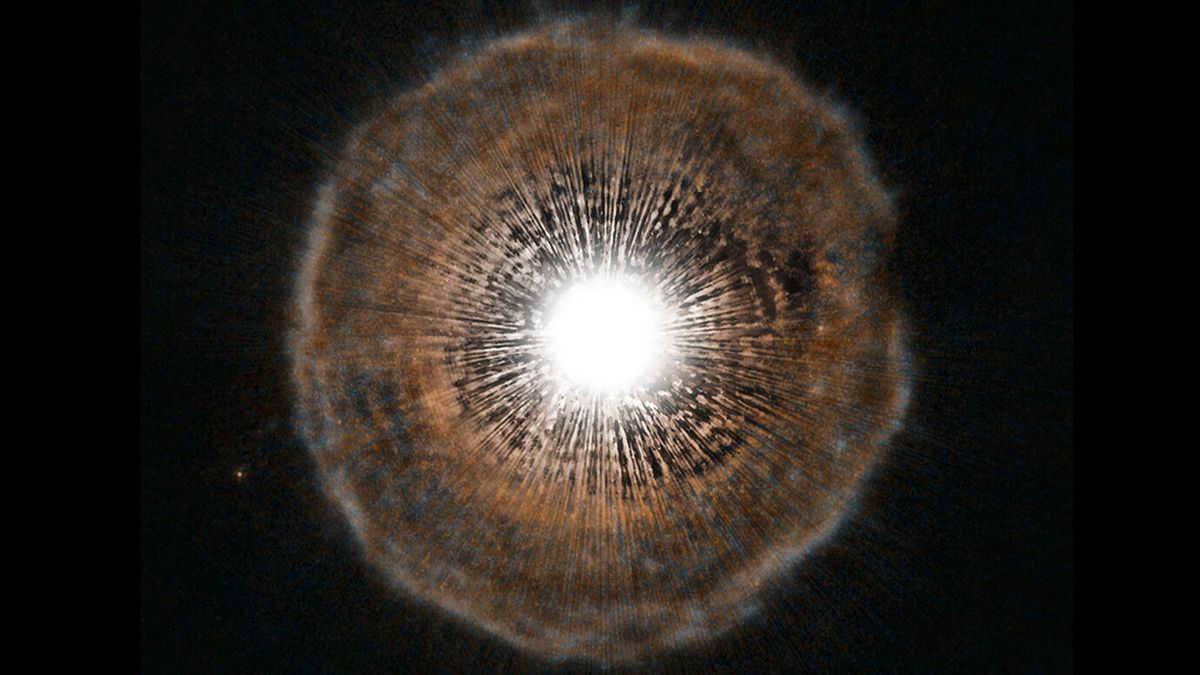
When a star collapses, the pressure in its core begins to increase rapidly. Nuclear fusion continues, but now it can produce even heavier elements like carbon, oxygen, and nitrogen. The fusion process will keep going until it reaches iron.
While some of the largest stars can fuse iron in their cores, this process requires more energy than it releases. Once iron forms in the core of a star, it enters the final stage of its life – the star implodes. In the core, the pressure becomes so intense that the space between individual atoms decreases.
Neutrons are formed when protons and electrons combine, and eventually the nucleus is primarily composed of neutrons. This results in the formation of a neutron star. As the outer layers of the star collapse and rebound off the neutron star, a powerful explosion known as a supernova occurs. In some cases, the collapse of the most massive stars in the universe can continue even after the formation of a neutron star, leading to the creation of a black hole.
Stars with lower and intermediate mass do not have enough mass to form a neutron star and undergo a supernova. Instead, when a low-mass star exhausts its available hydrogen, it expands and becomes a red giant.
The size of the star will expand, while its weight will stay constant. As a result, the gravitational force of the star is insufficient to keep the outer layers intact. Consequently, they gradually deflate, creating a shell of stellar substance around the fading star known as a planetary nebula.
The inner core of the star implodes due to immense pressure, but it does not transform into a neutron star. Instead, the core of a star with low mass becomes a white dwarf. Given the mass of our Sun, it is probable that it will meet its end in this manner.
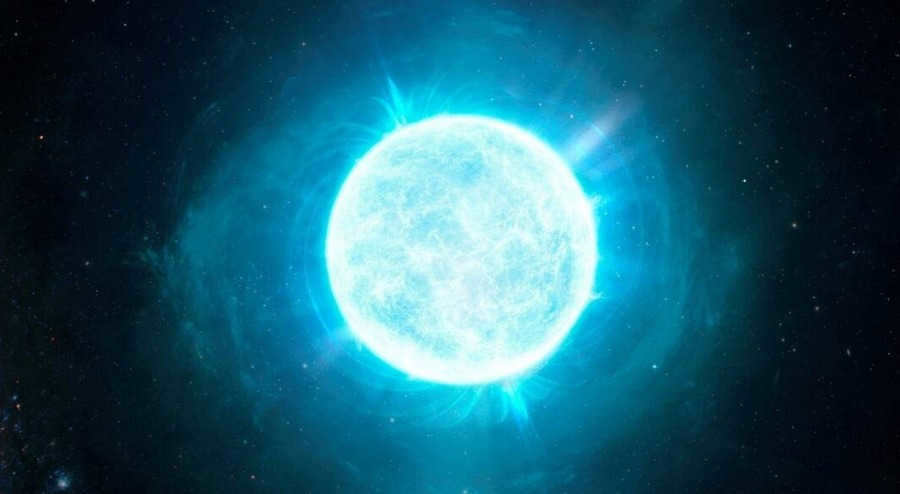
The Rebirth of Celestial Bodies
The demise of a celestial body does not mark the culmination of its narrative. Astonishingly, the matter formed through nuclear fusion will eventually coalesce to create a new generation of celestial bodies and planetary systems.
In fact, astrophysicists infer from the chemical composition of the Sun that it is a third-generation celestial body. This implies that the substances comprising the Sun and the planets within our solar system were once constituents of two distinct systems that existed long before our own.
The demise of one celestial body typically results in the formation of another, thus defining an ongoing cycle. However, this cycle will eventually reach its conclusion.
While the universe is filled with an immense quantity of hydrogen, it is not boundless. In due course, stars will transform the majority of the accessible hydrogen in the universe into more substantial substances, resulting in the gradual cessation of the star formation process.
After countless trillions of years, the formation of stars will cease entirely. Many trillions of years later, the final stars will gradually diminish and fade away, ultimately leading to a dark Universe, much like its state prior to the emergence of the first stars.
According to scientists, it is predicted that galaxies will stop forming stars in less than 100 trillion years. This implies that the Universe is transitioning from the era of stars to the era of decay. Once star formation ceases and the smallest red dwarf stars have exhausted their fuel, the only remaining stellar entities will be the final outcomes of stellar evolution: white dwarfs, neutron stars, and black holes.

The lifespan of stars encompasses multiple phases, during which these celestial bodies endure millions and billions of years, steadily progressing towards their inevitable conclusion, either transforming into brilliant supernova explosions or fading into the abyss of black holes.
Overview
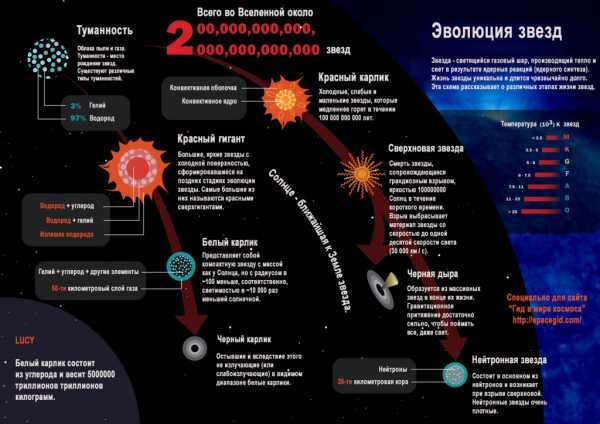
The lifespan of stars in space is an extraordinarily lengthy and intricate process accompanied by cosmic-scale phenomena. Its multifaceted nature is impossible to fully trace and study, even with the entire arsenal of modern science. However, based on the unique knowledge that has been accumulated and processed throughout the existence of terrestrial astronomy, we gain access to layers of invaluable information. This enables us to establish connections between the sequence of events in the life cycle of stars and develop models to understand their development. What are these stages?
The process of star formation and evolution

Make sure you experience the captivating interactive application “The Life Cycle of Stars”!
Chapter I: Protostars
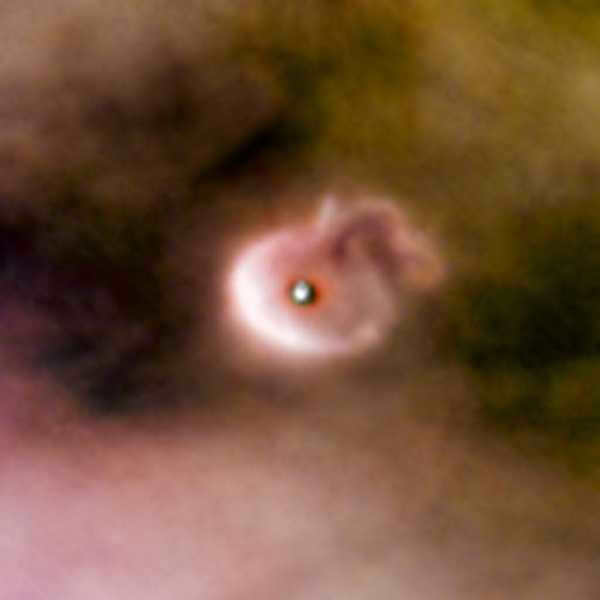
A protoplanetary disk surrounding a young solar system in the Orion Nebula
The life cycle of stars, similar to all objects in the universe, commences with their birth. This occurrence transpires within the formation of an immensely vast cloud, in which the initial molecules manifest, hence why the formation is referred to as molecular. Occasionally, another term is also utilized, explicitly uncovering the essence of the process – the cradle of stars.
Only when circumstances are insurmountable and a cloud experiences an extremely rapid compression of its constituent particles with mass, known as gravitational collapse, does the formation of a future star begin. This is triggered by a burst of gravitational energy, some of which compresses the gas molecules and heats up the parent cloud. As a result, the transparency of the formation gradually diminishes, leading to further heating and increased pressure at its core. The final stage in the protostellar phase involves the accretion of matter onto the nucleus, causing the nascent luminosity to grow and become visible as the pressure from the emitted light disperses the surrounding dust to the outer regions.
Episode II. Rising stars
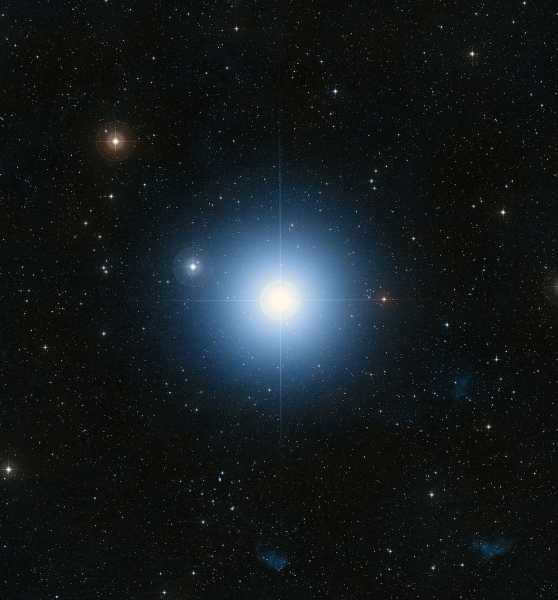
Fomalgaut, DSS catalog image, continues to possess a protoplanetary disk.
Chapter III. The flourishing of a star’s existence
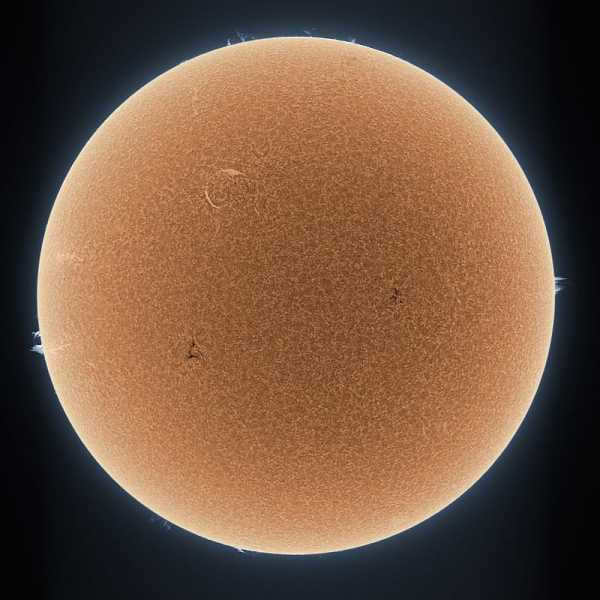
The H alpha line captures the image of the Sun, showcasing our star in its peak condition.
Cosmic luminaries can exhibit a wide range of colors, masses, and sizes in the prime of their existence. Their vibrant hues can span from shades of blue to red, and their mass can either be significantly smaller than that of the Sun or surpass it by more than three hundred times. The main sequence of a star’s lifecycle typically lasts around ten billion years, after which the core of the celestial body depletes its hydrogen reserves. This moment marks the transition to the next stage of the star’s life. With the hydrogen resources exhausted, the core ceases thermonuclear reactions. However, as the star undergoes a newly initiated compression, collapse occurs, triggering the onset of thermonuclear reactions involving helium. This phenomenon results in a remarkable expansion of the star, transforming it into a red giant.
Episode IV. The downfall of the stars and their destruction
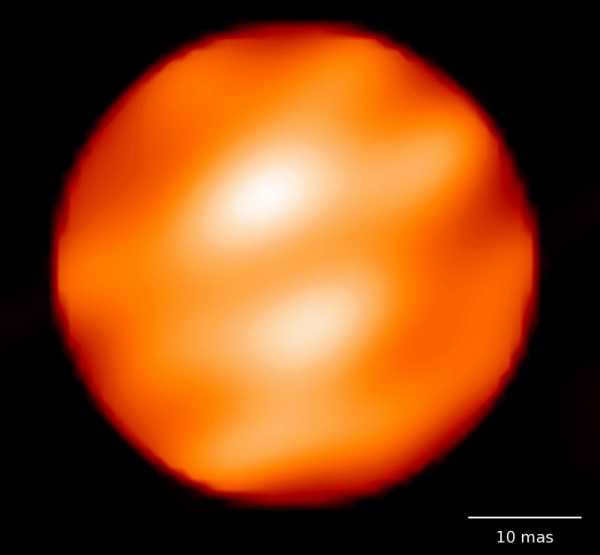
This is an image taken by the Hubble telescope showing the disk of the famous star Betelgeuse.
Engaging tidbits about the life cycles of stars
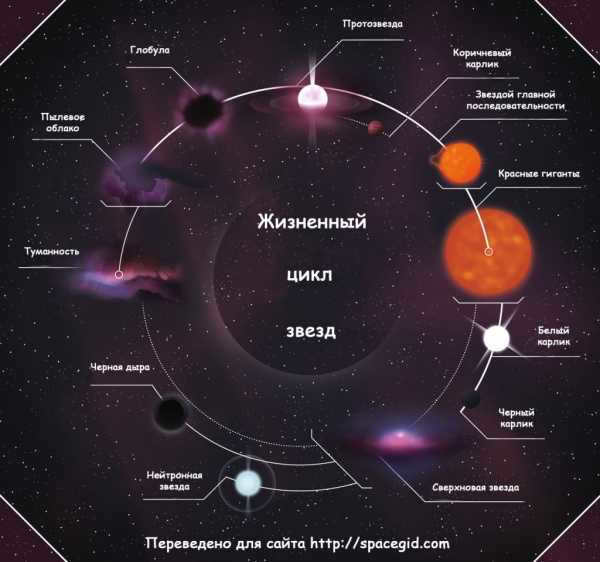
One of the most intriguing and extraordinary pieces of information about the life cycle of stars in the universe is that the majority of celestial bodies in our vast cosmos are currently in the red dwarf stage. These objects have significantly smaller masses compared to that of our Sun.
Equally fascinating is the fact that the magnetic attraction exerted by neutron stars is billions of times stronger than the gravitational pull of Earth’s luminaries.
The impact of mass on a star
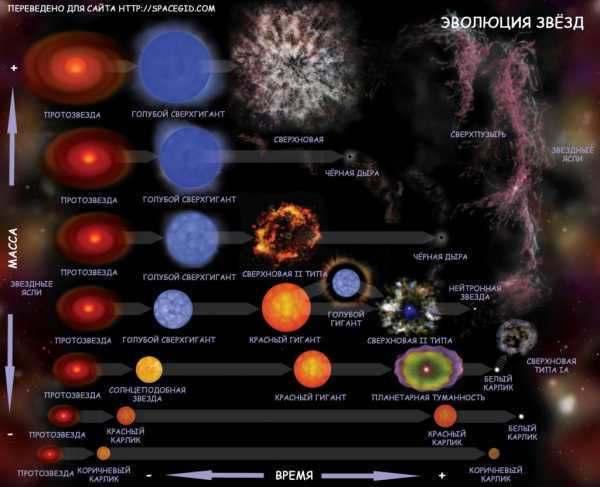
The trajectory of a star as a function of its mass
Another equally fascinating fact is the remarkable lifespan of the largest known types of stars. With the ability to exceed the mass of the Sun by hundreds of times, they also release energy that is many times greater, sometimes even millions of times. As a result, their lifespans are much shorter. In certain instances, their existence can span only a few million years, in comparison to the billions of years that low-mass stars live.
Another intriguing fact is the contrast between black holes and white dwarfs. It is worth noting that the former are born from the most massive stars, while the latter, on the other hand, originate from the smallest ones.
The cosmos is a vast and mysterious place, filled with countless unique phenomena that continue to captivate and intrigue scientists and researchers. Despite our best efforts, the universe remains largely unexplored, leaving much to be discovered and understood. One area of particular interest is the study of stars and their life cycles. Through careful observation and theoretical calculations, scientists have been able to glean valuable knowledge about these celestial bodies. However, there is still much that we do not know. This constant state of exploration and discovery provides a never-ending source of fascination for astronomers, physicists, mathematicians, and chemists. Their tireless efforts contribute to the accumulation of knowledge, constantly refining and expanding our understanding of the cosmos.





